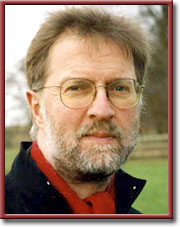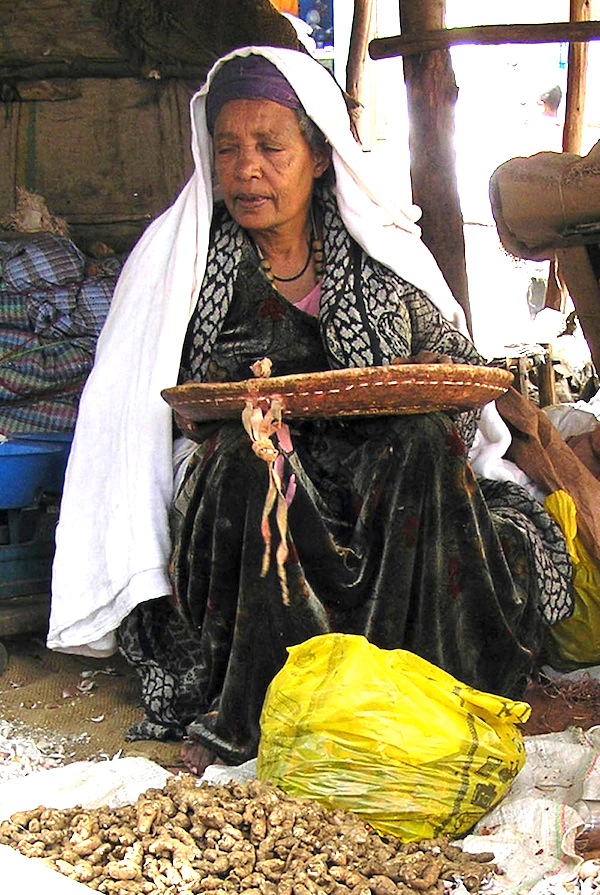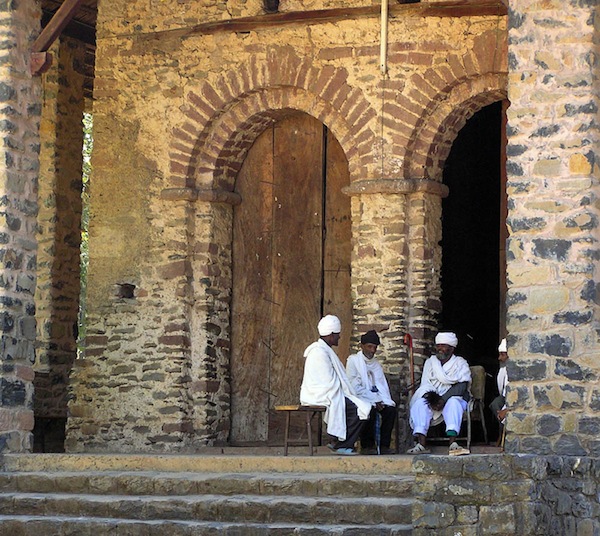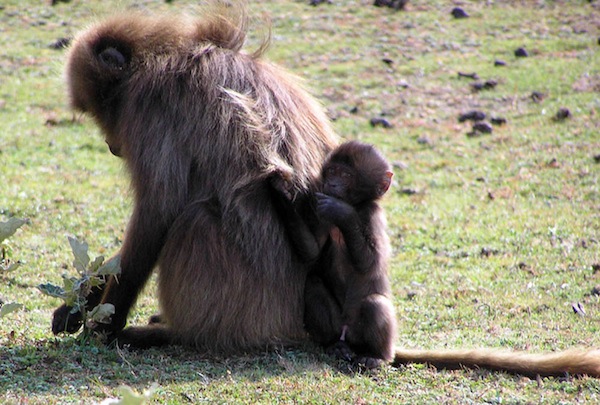A Town Like Addis, Xmas Without Xmas & Other Ethiopian Adventures, Part I
The Polemicist
by Michael House
“That amazing unknown country, Prester John’s fabled land of inaccessible mountain barriers and bottomless chasms, and wild, war-loving beautiful folk.”—George MacDonald Fraser
 BACK IN LONDON England—(Weekly Hubris)—1/23/12—Fraser was writing about Ethiopia in 1868, when Britain sent an expeditionary force to rescue hostages held by mad, brilliant Emperor Theodore (Teeodros), who took his own life when the Brits were closing in on his amba (flat-topped fortress with vertical sides, like the leg of an up-turned table) at Magdala.
BACK IN LONDON England—(Weekly Hubris)—1/23/12—Fraser was writing about Ethiopia in 1868, when Britain sent an expeditionary force to rescue hostages held by mad, brilliant Emperor Theodore (Teeodros), who took his own life when the Brits were closing in on his amba (flat-topped fortress with vertical sides, like the leg of an up-turned table) at Magdala.
At the Addis Museum, I bought a T-shirt depicting this extraordinary man, an inspired general who united briefly the warlord-ridden tribes of Abyssinia, but a latter-day Caligula for insane cruelty. He was a kingly man of immense presence, his hair set in the cane-rows now so popular with young Afro-Caribbean males. The story goes that he wrote a letter to Queen Victoria, which the buffoons at The Foreign Office failed to answer, so Theodore seized and tortured British citizens living in the country. Magdala is now a center for the weaving of handsome, undyed flatweave rugs of brown, grey and black sheep’s wool, with striking geometric designs, one of which now sits in my London hallway. But I digress.

Day 1: Sunday, 18December Evening flight to Addis on Ethiopian Airlines, on an elderly but serviceable plane. No sleep because of yowling children. First Class is called Cloud Nine. Landed in Addis as the sun rose. Still a bit chilly at 8,000 feet. Addis is an artificial construct, chosen as the capital by the Negus (Emperor) Menelik in 1887, after the capitals had wandered over the empire for centuries. The name “Addis Ababa” means “new flower.” Not very apposite today.
Having had no sleep, I naturally went for a walk after arriving at the hotel. The streets were broad and largely empty, with some westernized buildings, the legacy of the Italian occupation from 1936. Despite dire warnings in the guide books about hostility to “farangis,” active pick-pockets, con-artists and aggressive beggars, I encountered nothing more hostile than a few friendly waves across the road. The climate was pleasantly warm.
My group, led by a cool and efficient young man of mixed Ethiopian and Italian ancestry, Dario, lunched at a restaurant where we ate the local way. A large, circular platter is provided, coverd with various offerings, mainly meat in different guises. Rolls of a pancake-like substance are used to scoop up the food and eat it—no cutlery. After, a waitress poured soap and hot water over our hands, and another waitress produced warm towels. All very civilized. Happily, steaks are no longer cut from live animals and eaten raw (see James Bruce, Travels, 1790.)
Then a visit to the cathedral, where Haile Selassie is buried. The last emperor was murdered in 1975 by the dictator, Colonel Mengistu, and buried next to a latrine, ending 3,000 years of rule by the supposed descendants of Solomon and the Queen of Sheba. His remains were exhumed after Mengistu fell, and decently re-interred. In the cemetery outside, there is a handsome memorial to Sylvia Pankhurst, the great suffragist campaigner, who later made Ethiopia her home. Northern Ethiopia is almost entirely Christian, an emperor having adopted the religion in the third century AD.
The National Museum was far more interesting, housing Lucy, arguably the oldest hominid yet found by archaeologists, 3.2 million years old. The ethnological section appealed to me especially. I loved the old, carved neck-rests used by the Oromo people of the south. They have—or had—extraordinarily elaborate hairstyles, held in place by oil and butter. Rather than use pillows, to preserve their hair, they slept with their necks on intricately carved rests, thus keeping their coifs in order.

Day 2: Monday, 19December Holidays can be hard work. Having missed a night’s sleep, we were up at 4.30 a.m. for the one-hour flight to the old capital of Gondar. Not only did we have to check in 2 hours before the flight, I had to take my boots off twice for security checks. I hope, as the tourist industry develops, the airports will become more user-friendly.
Gondar was the capital from 1635. Before, Ethiopia had had no capital as such, the emperor and his court wandering around the country, fighting wars and living off the land. After a period of great upheaval, including war with a Muslim usurper, Abdul Grayn, and violent religious conflict between the established Orthodox Church and an emperor who wanted to convert the country to Catholicism, the Emperor Fasilidas wanted to create stability. So he chose a small hilltop village in the foothills of the Simien Mountains as his new capital.
Gondar is a friendly, laid-back town. Its chief glories are the Debre Birhan Selassie church, said to have the finest frescoes in Ethiopia—which is saying a lot—and the Royal Enclosure. As in Byzantine churches in Greece, the frescoes in this church, covering every inch of wall and ceiling, taught an illiterate population the myths of religion. There is a particulary fine and scary Devil within the flames of Hell, and there are graphic depictions of what lies in wait for sinners—religion as a mechanism of social control.
The Royal Enclosure, a UNESCO World Heritage Site, houses a collection of medieval-style castles unique in sub-Saharan Africa. There are six small, self-contained castles, built for occupation rather than defense, with a complex of connecting tunnels. Each of Fasilidas’s five successors added his own creation to the family enclave. Some have been beautifully restored. One sad relic is the Royal Archive Building. The Italian occupers used it as a military HQ, and the RAF bombed it into a picturesque ruin. The compound is huge and peaceful, with a profusion of trees. It is a lovely place for bird-watchers. A slice of history, preserved in aspic.
Then to the local market. There is no famine in the Ethiopian highlands: everywhere, huge piles of food, herbs and spices. Iron tools were being smelted and fashioned. Lambskin bellows made the charcoal fire glow, then a tool was heated until red-hot. Next it was beaten into shape, three men with sledge-hammers hitting it in rotation.
I liked Gondar very much. But a visitor in 1868 would have seen a reeking, smoking ruin, with a forest of crosses on which Theodore had crucified in their hundreds the population of the town. The priests called down curses on his head and he had them burned alive. The sin of the people was that they had protected rebels against Theodore’s rule. So when the young women of the town greeted his army’s arrival by singing and dancing, he decided that the singing had been a signal for the rebels to flee, and consigned the women to the flames. Every inhabitant was murdered (see Dr. Henry Blanc, A Narrative of the Captivity in Abyssinia, 1868).

Day 3: Tuesday, 20 December Drove into the Simien Mountains National Park, for one of the most magical days of the trip. The drive was rather grim—road-building in Ethiopia is a work-in-progress, Chinese engineers much in evidence. Mostly on dirt-tracks. Every child waves at passing farangis, so my arm began to ache after a while. When we stopped, children appeared as if out of the ground, wanting to shake hands and asking for pens, sweets and money. Stupid tourists have turned most children into beggars. But it is all very good-natured, perhaps more a game than anything else.
We climbed into the foothills, where the harvest was in full swing. The scenes were biblical. Threshing was done in a timeless way, three or four cattle—the ancient Egyptian breed with the humped necks, called zebu—driven endlessly round in a circle to trample the corn. Likewise, winnowing—tossing the grain in the air over and over, so that the chaff would blow away. Progress was frequently halted as mixed herds of goats, fat-tailed sheep, oxen, donkeys, mules and, occasionally, camels were driven along the road.
We arrived at the eco-lodge, at 10,700 feet, the highest in Africa, in the early afternoon. We were housed in traditional round, stone-and-dung-walled huts with thatched roofs: very comfortable.
The highlight of the day was a hike into the mountains, during which we encountered a troup of about 50 Gelada Baboons. They were utterly fearless, treating us as if we were a herd of antelope rather than humans. They were mainly grazing, which they do by grubbing up and eating the roots of grasses. There were grizzled elders digging up the grass, and babies play-fighting and grooming. We could go within a few feet of them and they showed neither fear nor hostility. As time passed, they moved towards a cliff-face below the plateau, where they spend the night to avoid marauding hyenas and big cats. It was an utterly captivating afternoon. Huge lammergeiers floated on the thermals above the canyon, seeking prey.

![]()
PS I see “Newt” Gingrinch has won the South Carolina Republican primary. But are the American people ready for an amphibian in the White House? Especially after three years of a President without a backbone?
(To Be Continued . . .)
3 Comments
diana
Wonderful, Michael. Can’t wait for the next installments.
Michael House
Thank you so much. Tomorrow, I hope.
Michael House
I saw mainly the good side of Ethiopia. To read about the bad side, click on the link below. http://www.nytimes.com/2012/01/29/opinion/sunday/kristof-whats-he-got-to-hide.html?_r=1